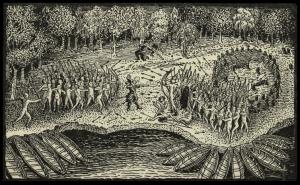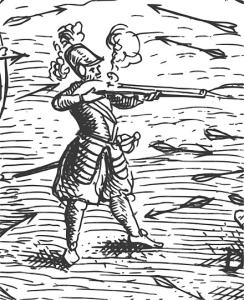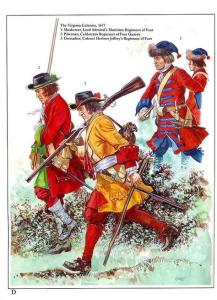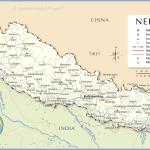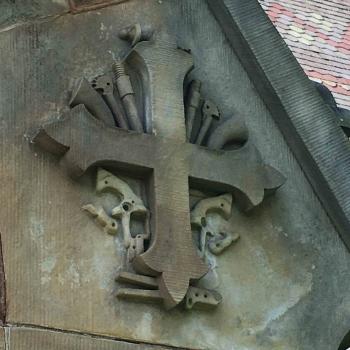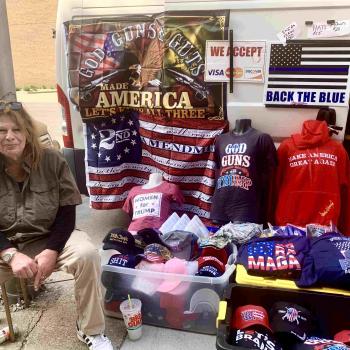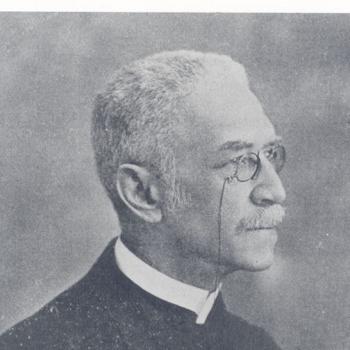During the month of April at the Anxious Bench, a number of our columnists are participating in a joint collaboration with the AACC (Asian American Christian Collaborative) to draw attention to the history of gun violence in the United States. Since the shootings in Buffalo, Laguna Woods, and Uvalde, the AACC has been a crucial Christian organization that is actively pursuing advocacy and policy efforts to address gun violence in the United States, and the Anxious Bench is proud to partner with them to raise awareness about the long and terrible history of gun violence in the United States.
Second amendment rights is about protecting white supremacy.
The right to possess a firearm long has been considered a sacred idol in the history of the United States. While this right has been enshrined in our constitution’s Bill of Rights as the second amendment, this does not mean that every inhabitant has had this right during our long history. Rather, when Europeans first arrived and “others” were forcibly brought to America, white colonists intentionally withheld firearms from people thought to be a viable threat to civil society. You see, among the vital technologies of Empire, guns were among the most formative technologies employed to gain and maintain European, Christian, and White power.
When the Spanish first arrived on the Yucatan peninsula in the sixteenth century, the arquebus (a primitive firearm), though entirely ineffective as an accurate and precise lethal weapon, was still very useful to instill fear and intimidation in Mayan and Aztec inhabitants during Cortez’s 1519 conquest of the Yucatan. The loud and smoking weapon confused Amerindians on the battle field. The combination of armor, steel weaponry, horse, war dogs, and crossbow bolts proved to be the more effective components for colonizers to subdue native inhabitants in Mesoamerica. Nonetheless, when a bullet did effectively rip through the flesh of a foe, it instilled as much terror then as an AR-15 in a school shooting today.
As primitive firearm technology improved into a more effective, accurate, and precise lethal weapon in the seventeenth century, both the French and Dutch brought muskets for use in the fur trade and the beaver wars that shaped much of Amerindian life, beginning in 1609. The French supplied their Huron allies with muskets to make it more efficient for them to harvest beaver pelts, and the Dutch supplied their Iroquois allies with muskets in order to slay the Huron and steal those same beaver pelts. Though microbial pathogens played their role in wiping out Amerindians across the Eastern Woodlands to the Great Lakes basin, the gun trade played its role in Indian on Indian genocidal acts of gun violence, no different than how Whites have apathetically viewed black on black gang violence in predominantly black communities during the latter twentieth and early twenty-first century.
British colonists, those people from whom the United States derived its hegemony of heritage, maintained a gun policy that differentiated its colonies from its French Catholic imperial neighbors to the North and the Dutch interlopers in what is now described as the middle colonies of colonial America. Particularly in New England, colonial laws prohibited the sale of firearms to Amerindians. Heavy fines were given to those colonists who breached these laws. Arming Amerindians meant they might turn those firearms against their colonizers and attempt to overthrow their power. This almost occurred in 1675 when Metacom (notoriously known as King Philip) mustered a strategic alliance of Wampanoag, Narragansett, and Nipmuc to wage genocidal war against New England colonists. Twelve New England villages were razed and over 1,000 colonial militia were killed in this war (10% of the male-adult population).
In the same year Metacom attempted to wipe out New England colonists, Nathaniel Bacon attempted the same sort of policy against Amerindians in the Chesapeake. He mustered a body of common planter militia in Virginia to go on a genocidal rampage through the Chesapeake frontier. His aim was to clear the frontier for Westward moving colonists to possess new lands for tobacco fields. His rebellion against Governor William Berkely set the stage for the second amendment, for as a result of this rebellion, the British brought its first standing army of British regulars to the colonies and continued a policy of Royal military presence that would continue until the conclusion of the American Revolution.
Besides preventing Amerindians from getting their hands on firearms, the other class of people British colonists feared possessing firearms were slaves. Colonial militia existed for multiple functions. Their first function was to protect colonial villages from Amerindian attacks. Another function was to protect the colony from other Imperial foes, such as the French, Dutch, or the Spanish. However, its often conveniently overlooked that the colonial militia’s primary and routine function was to regularly patrol roadways and the wilderness for runaway slaves, who were forming maroon communities, and to routinely raid plantation slave quarters to search and seize contraband possessions, especially weapons or poison that might be employed for insurrection purposes.
Southern colonial British Indian policy to keep the Natives dispossessed from firearms altered in the latter seventeenth century as the proportion of slaves exceeded the number of whites in Souther colonies. At this time, Amerindians inhabiting lands in the southern colonies were incentivized to turn over runaway slaves to the British. They were offered a gun and two blankets if they returned a slave to the colonists. This innovative policy effectively pitted Amerindians against slaves, so they did not unite in an insurrection and revolt against the minority whites in power throughout the Southern colonies. It’s fine when “othered” people eviscerate one another with lethal firearms, but when they turn them against those in power, it becomes intolerable.
You see, ingrained in the historical memory of our nation is the notion that some people had the right to possess firearms and “others” ought to be deprived of that right. Firearms ought to be possessed by property owners who defended their property. Firearms could only be possessed by citizens. If “others” possessed firearms, it was to the advantage of those in power. Firearm possession, historically, was a racialized phenomenon.
Unless it furthered the purpose of white power, it was undesirable for Amerindians to possess firearms, for that made it more difficult to progressively dispossess them of their property across the eighteenth and nineteenth century. Once African-Americans possessed the right of citizenship, they then had the right to possess firearms. Thus, it was crucial to create a system of mass incarceration in order to continue to deprive them of their right to firearms. In other words, gun policy and citizenship held hands in a symbiotic effort to protect white supremacy.
The crisis of domestic terrorism from mass and school shootings is so terrifying for many U. S. citizens because it is also a racialized phenomenon. The preponderance of shootings that occur are perpetrated by young, white men—the kind of people who have historically had the right to possess firearms. Protecting and maintaining this right is one of the symbols of historic white supremacy that can yet be preserved.
Sure enough, firearm possession has been democratized as much as suffrage. However, the true fear concerning forsaking second amendment rights is the disempowering effect it has for white men. The powers that differentiated and maintained white male supremacy have been progressively altered throughout the course of U. S. history. Political policy through Supreme Court rulings, legislative law, or executive orders has democratized voting, occupations, and education for people of every race and gender. The second amendment is one of the last vestiges of white power to remain unaltered. While many people think and argue that preserving this right is about protecting the right to sports, like marksmanship or hunting, or preserving the right to defend one’s home, in reality, the unspoken reason is that this right is symbolic of the sacred idol of white supremacy in our history.
Altering this law is an admission that white men no longer have the power to protect their lives from “others” who threaten them, and they no longer have the right to manipulate gun policy to protect their power, or, when all else fails, to take the lives of those they historically despised as heathens or oppressed as slaves. Forsaking second amendment rights also moves our society one step closer to giving up another sacred idol of white supremacy, the power to illegally or legally and lethally apply capital punishment to “others,” for those who predominantly have been illegally lynched or legally executed in America have been the “others”: witches, pirates, Amerindians, slaves, communists, or anyone else “othered” by society.
Ask yourself: “What appears to be the tipping point?” Has it been mass shootings of black on black gang violence in South Chicago? Has it been a school mass shooting against a predominantly latino community in Uvalde? Has it been a mass shooting against the Asian community in California? When did white suburban people organize against gun violence in recent time? And when did black state representatives get expelled due to political organization against gun violence?
I’ll say it once again. Sadly, second amendment rights has been and is still about protecting white supremacy.


